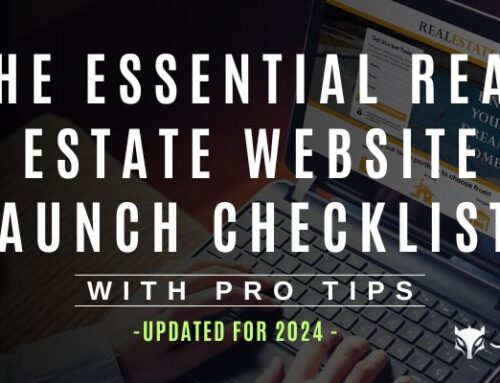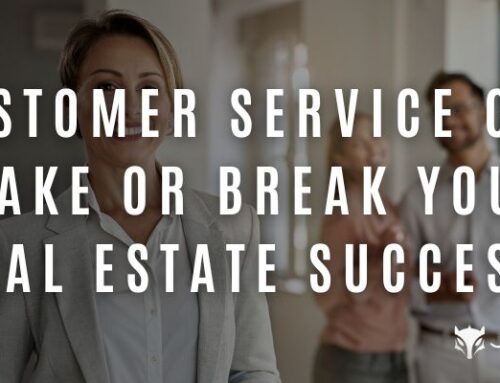So you’ve got a great website…now what?
Because more than 44% of all home searches start with online research, it’s no surprise that Realtors need a strong web presence to succeed in business.
Building a solid website that converts your searchers to hand raisers is very important – but is really just the first step you need to take to earn business. In other words, having a great real estate website is part of the equation of driving business from the web – but to really succeed and get the most out of your leads, you need to invest in developing strong systems and follow-up processes.
With young people making up a significant portion of the home buying pool, it has forced the industry’s need to adopt a digitally-focused advertising approach. As a result, we’re seeing increased competition and costs to land new leads across popular ad mediums such as Facebook and the Google Ads network. With this increase in cost and competition, this article’s focus will be around optimizing these opportunities to decrease lead loss and increase business.
Before following the steps in this article, you’ll want to make sure you have already invested in a solid real estate website. If you haven’t yet – these steps are premature.
We will be covering:
- Getting more out of your ad spending
- Digitizing your follow-up process
- The benefits of using a CRM system
 GETTING MORE OUT OF YOUR AD SPENDING
GETTING MORE OUT OF YOUR AD SPENDING
Marketing is a lot like fishing. You can go into the middle of the ocean, cast a wide net, catch a little bit of everything, and then spend time and resources picking apart the fish you don’t want. Or, you can go to an area that you know has a high likelihood of having whatever it is that you’re looking to catch.
optimizing your marketing strategy from brand awareness to consideration, to conversion through to client advocacy.
One mistake we see Realtors make is that they focus too heavily (or sometimes solely) on conversion activities. When an individual is looking to make one of the most significant financial decisions of their life, it’s important to gain their trust – and that happens over time. So, we’ll take a look at optimizing your marketing strategy from brand awareness to consideration, to conversion through to client advocacy.
- High-Funnel: High-Funnel activities are best suited for brand awareness. These include ads on Facebook, Google Display, and OOH (out of home) activities such as billboards, bus stop ads etc. It should go without saying, but these ads will drive traffic to a high converting page on your website.
The best way to leverage these in your strategy is to develop ads that entice net-new users such as free home evaluations, staging, low commission rates etc. and have the ads link to your website. If you have your Facebook Pixel and Google Tags installed on the website, you’ll be able to track all of these new users. Then you can create segmented audiences to which you can begin serving mid-funnel ads. Why? Because they have already viewed your ad, visited your website, and in essence, will have higher intent to buy.
- Mid-Funnel: Mid-Funnel activities are meant to turn a cold lead into a warm one. A great way to get users to become familiar with you and trust in your services is to have a lot of for sale signs on yards across the city. On the digital front, the next best thing would be to highlight all of your recently listed or recently sold properties on your website.
This way, prospects will see your brand regularly, so they’ll have a much higher likelihood of reaching out to you when a real estate need arises as opposed to just a cold call.
- Low-Funnel: Low-funnel activities are focused on getting conversions. A great example of this would be if you’re retargeting based on geography, you could run an ad showing recent prices for their Zip code. As a result, it may entice the lead to reach out to you for a free home evaluation.
Something to keep you on the minds of clients would be an email or a text message sent on their birthday or surprising them with a Christmas gift.
- Client Advocacy: The best way to gain client advocacy is to provide a stellar customer experience. Word of mouth advertising still reigns as the highest-converting marketing method around. If you provide your clients with a positive experience, it could lead to a life-long business relationship that yields many more potential clients.
In essence, you want to allocate your marketing spend across all phases of the funnel. This will allow for a consistent pipeline of familiarizing cold leads with who you are and your services, having them consider you as a possible service provider, eventually bringing them on as a client and finally getting them to become advocates of your business.
Optimize your Lead to Appointment Percentage
 DIGITIZING THE FOLLOW-UP PROCESS
DIGITIZING THE FOLLOW-UP PROCESS
Chances are, if a client is reaching out to you from an ad, there is a high probability that they’re reaching out to other Realtors as well. Many Realtors report a sub-1% conversion rate on internet leads overall….which of course, is very, very low! So how can you get more out of your internet leads?
It’s critical to have a follow-up process in place to ensure that you’re connecting with clients promptly, effectively and are tracking your metrics to optimize your Lead to Appointment Percentage.
The lead to appointment percentage looks at how many of your leads turn into appointments. It is calculated as: Appointment/Lead x 100= %
So, if you had three appointments generated from 10 leads, you’d have a 30% Lead to Appointment Percentage (3/10 x 100=30%).
The goal of any marketing strategy is to grow business. In order to optimize this percentage, you can take a look at a few different avenues. There are marketing staples such as MailChimp, an email marketing platform as well as newcomers such as Vidyard, a video marketing tool. Vidyard and other tools like it allow you to create a more personalized follow-up process.
Ever heard the adage that a picture is worth a thousand words? Well, with video marketing, you’re personalizing your advertising with the use of video. And the best part? 46% of users act after viewing an ad.
Now, if you integrate your video marketing strategy with email automation through MailChimp, you can take a lot of the legwork of following up out of your hands. This will free up your time to focus on doing what you want to do, close business.
THE BENEFITS OF USING A REAL ESTATE CRM SYSTEM
Time and time again, we have seen agents start netting new leads, only to neglect them later because they simply don’t have the time to nurture them into viable prospects. Something that all Realtor® should consider if they’re looking to optimize their Lead to Appointment Percentage is a Client Relationship Management (CRM) tool.
There are many available online, many of which cater specifically to the real estate niche. For those that are unaware, a CRM is essentially a client management tool.
If synced properly, it tracks a lead as soon as it’s generated and allows you to input activities to help nurture that lead into future business.
Going beyond the automated drip campaigns, CRM allows you to keep track of your clients.
For example, some of these tools integrate quite well with drip campaigns so you can open an automated email campaign that will continue getting your name and brand into their inbox. Now, it’s important to note that you don’t want to overwhelm clients with constant, irrelevant emails. When developing a drip campaign, the recommendation would be to provide poignant information such as market updates, statistics, and tips on how to make the home buying process simpler.
Going beyond the automated drip campaigns, CRM allows you to keep track of your clients. When you’re having a conversation with them to build rapport, you can take all of your notes and drop them right into the CRM, so the next time you connect, you can connect with them on a more personal level. Speaking of having conversations, if a client says they’re not ready to buy for six months, you can make a note for yourself and follow up after that time has passed to keep the conversation moving.
There are many great real estate-specific CRMs available – once you’ve got a good idea of what you need, you can check out online reviews from a third party site like Agent Advice to compare different options. Make sure you’re going in looking for both the pros – and cons – of each. There is no one size fits all solution for all situations.
TAKEAWAYS
Having a well polished website is important, but it’s one piece of the bigger marketing and operations puzzle you’ll need to put together. As the digital world becomes more populated with real estate ads, making lead acquisition more competitive and expensive, it’s crucial to ensure that your entire strategy is refined and optimized to maximize your ad spend.
Audience segmentation, re-marketing, taking a digital-first approach to following up, and utilizing a CRM system are just a few of the tools that Realtors can use to separate themselves from the pack. Regardless of the type of marketing activity you choose to employ, remember that it should be authentic, informative, and on-brand with your business.
Market to others the way that you would like to be marketed to. If you signed up for a free home evaluation and then received an email from an agent every few days about new listings, you may get frustrated and unsubscribe. Acquiring new leads is expensive, so ensure that your follow-up activities strive to nurture and not infuriate.










Leave A Comment